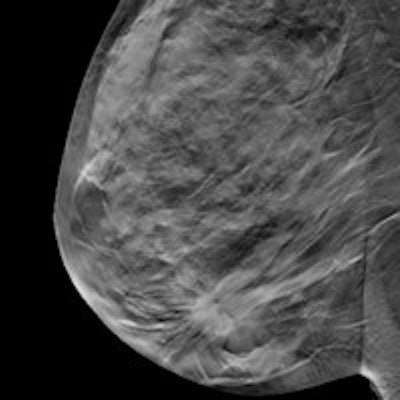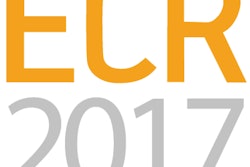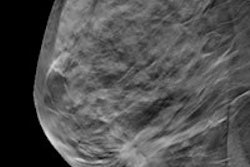
Adding digital breast tomosynthesis (DBT) to conventional mammography boosted the specificity of breast screening and cut the recall of women with benign lesions by more than half in a new study published in Radiology. DBT plus mammography also showed sensitivity gains in some groups of women.
Researchers from the University of Cambridge in the U.K. found that adding DBT to mammography improved specificity by about 20% across subgroups of patients with different types of breast density, dominant radiologic features, and age. The improvement was slightly better if synthetic 2D images were created from original datasets, although the researchers discovered some shortcomings to synthetic 2D.
"We believe that DBT will be helpful in the assessment clinic to improve specificity of the mammographic examination, particularly for younger women with dense breasts," lead study author Dr. Fiona Gilbert told AuntMinnieEurope.com via email.
TOMMY trial
In other clinical trials, DBT has been shown to improve screening mammography's accuracy -- addressing what some call mammography's harms, such as false positives and overdiagnosis. But how it performs in particular subgroups of patients has yet to be established, which is why Gilbert and colleagues conducted this work.
The group used data collected from the U.K. National Health Service (NHS) Breast Screening Program's TOMMY trial, which started in 2010 and compared tomosynthesis with digital mammography.
 Dr. Fiona Gilbert from the University of Cambridge.
Dr. Fiona Gilbert from the University of Cambridge.The research included approximately 7,000 women who underwent standard 2D mammography and two-view DBT as a single procedure between July 2011 and March 2013. Twenty-six radiologist readers attended a one-day DBT reading course and interpreted 80 test cases before beginning the study; they were randomized into groups that read 2D mammography images only, 2D mammography plus DBT images, or synthetic 2D mammography plus DBT images (Radiology, 15 July 2015).
Both conventional and DBT exams were conducted using Hologic's Selenia Dimensions unit, and synthetic 2D images were produced with the version of the company's C-View image processing software that was available in 2011.
Overall specificity percentages were 58% for 2D mammography, 69% for 2D plus DBT, and 71% for synthetic 2D plus DBT, the researchers found. Specificity percentages for women ages 50 to 59 were comparable to the overall numbers.
"Our study was not a screening trial, but the results are consistent with a relative improvement in specificity of 19%, suggesting that almost one in five of current false-positive recalls may be avoided by the addition of DBT," Gilbert and colleagues wrote.
The differences in sensitivity between the technologies for the overall population were not as dramatic. Overall, sensitivity was 87% for 2D mammography, 89% for 2D mammography plus DBT, and 88% for synthetic 2D mammography plus DBT.
However, for patients ages 50 to 59, the sensitivity of 2D mammography plus DBT was higher than it was for 2D mammography alone, at 91% versus 87% (p = 0.01). And for women with breast density of at least 50%, sensitivity was 93% for 2D mammography plus DBT, compared with 86% for 2D mammography alone (p = 0.03).
The researchers cautioned, though, that this improved sensitivity in these two subgroups was not seen with synthetic 2D mammography plus DBT.
"[This] could reflect a shortcoming of the synthetic algorithm," they wrote.
| Sensitivity, specificity by patient group | ||||||
| Group | 2D mammography | 2D plus DBT | Synthetic 2D plus DBT | |||
| Sensitivity | Specificity | Sensitivity | Specificity | Sensitivity | Specificity | |
| Age 50-59 | 87% | 54% | 91% | 67% | 88% | 69% |
| Density ≥ 50% | 86% | 57% | 93% | 70% | 87% | 72% |
| Overall | 87% | 58% | 89% | 69% | 88% | 71% |
Good for screening?
This improved specificity for 2D mammography plus DBT compared to mammography alone is consistent with published studies, and it suggests that using the combined modalities could be effective for screening -- especially because the number of false positives could be reduced, according to Gilbert and colleagues.
"In the United States, where recall rates are often higher than those in Europe, the addition of DBT may have greater effect," they concluded. "This study demonstrated that the addition of DBT is particularly valuable in certain groups of women, thereby facilitating the introduction of a more personalized approach to screening."



















